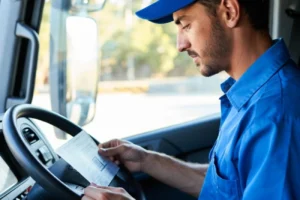He would require such powerful power and the consumption of so much fuel that the trip would be extremely expensive to begin with.
Have you ever wondered what Santa would actually have to do to reach all the children’s homes in the world? How fast should the famous sleigh travel to deliver so many gifts on time? A group of physics students from the University of Leicester did the math. In order to achieve such a feat, Santa Claus would have to maintain a constant rhythm based on the speed of light of 0.5%. That is, 6,213,711 miles per hour or 10 million kilometers in 60 minutes.
Would that be possible for someone trained by matter? Dr. Katy Sheen, a physicist at the University of Exeter in the United Kingdom, used Albert Einstein’s theory of relativity to also analyze speed and explain that, for the moment, children will never be able to see Santa. in the same night.
The calculation is based on 700 million children who inhabit the world in all the countries on Earth that must be visited within a period of 31 hours (if the changes in time zones that exist on the different continents are taken into account).
The speed to which the beloved character would be subjected would be so immense that it would change his color, to begin with. This is called the Doppler effect and it transforms the hue of light waves bouncing at such high speeds from red to green (almost like the Grinch). But there is much more, Santa would disappear.

“Some strange things happen when someone starts traveling so fast. First, time would slow down. Second, Santa Claus would get crushed, which means he can fit into a chimney more easily,” the physicist clarified with amusement.
At the end, Sheen concluded with a second theory: “For Santa to be able to fly so fast, it takes a lot of energy. How does he manage to reach those phenomenal speeds? Well, that’s magic, but it would certainly need a lot of fuel.”
But there is something that Santa has achieved. Without much speed or fuel he has been able to travel through the centuries, in the cultural ideology of an entire planet. And, closer in time, it has managed to move through a global network that connects the planet with underground cables and satellites: the Internet.

Women’s safety in the transport sector: urgent priorities
International Day for the Elimination of Violence against Women is observed today, November 25. International Day for the Elimination of Violence against Women is observed

Federal CDL policies linked to thousands of lost trucking jobs
Federal government measures regarding CDLs and English-language proficiency requirements have resulted in the loss of thousands of jobs in the trucking industry. Federal government measures

Thanksgiving 2025: Weather and Road Conditions Across the U.S.
Thanksgiving 2025: What Truckers Need to Know About Weather and Road Conditions Across the U.S.

Comprehensive Guide to the New Federal Rule for Accessing CDL Licenses
The federal government has redefined who can apply for, renew, or retain a Commercial Driver’s License (CDL), introducing new restrictions for migrants and issuing direct

What drivers want: more mileage, more pay
The results of the annual Commercial Carrier Journal survey, conducted in collaboration with Netradyne, “What Drivers Want,” have now been published. The results of the

U.S. Unveils 1st Female Crash-Test Dummy, Sparking Debate: Are Accidents Different for Men and Women?
The new THOR-05F marks a milestone: for the first time, a crash-test dummy accurately reflects the female anatomy. Officials argue that decades of safety testing based on male-bodied models left women more vulnerable to severe injuries. The announcement aligns with the administration’s broader push to reintroduce biological sex classifications in medical and safety policy.
